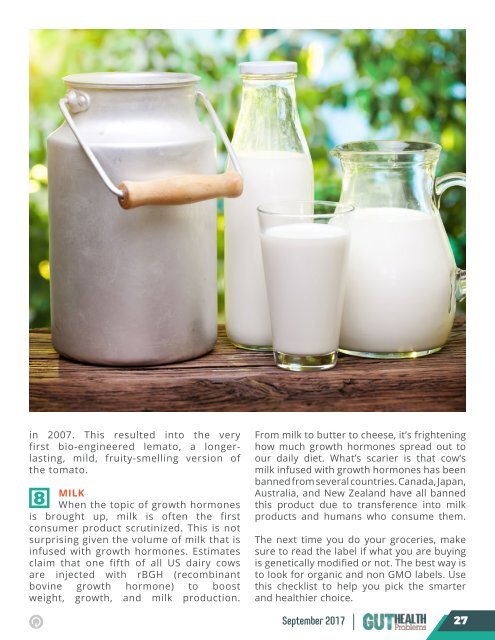Gut Health Problems - September 2017
In the eighth issue of Gut Health Problems, we have an overview of the vast benefits of probiotics, a checklist of foods rich in zinc, an intro to determining if you have fiber deficiency, and more. Intestinal discomfort, whether chronic or occasional, is something worth taking the time to prevent. And while we all have those foods that give us problems, you may actually be able to make a change that makes a bigger difference than you ever imagined.
In the eighth issue of Gut Health Problems, we have an overview of the vast benefits of probiotics, a checklist of foods rich in zinc, an intro to determining if you have fiber deficiency, and more. Intestinal discomfort, whether chronic or occasional, is something worth taking the time to prevent. And while we all have those foods that give us problems, you may actually be able to make a change that makes a bigger difference than you ever imagined.
Create successful ePaper yourself
Turn your PDF publications into a flip-book with our unique Google optimized e-Paper software.
in 2007. This resulted into the very<br />
first bio-engineered lemato, a longerlasting,<br />
mild, fruity-smelling version of<br />
the tomato.<br />
8 MILK<br />
When the topic of growth hormones<br />
is brought up, milk is often the first<br />
consumer product scrutinized. This is not<br />
surprising given the volume of milk that is<br />
infused with growth hormones. Estimates<br />
claim that one fifth of all US dairy cows<br />
are injected with rBGH (recombinant<br />
bovine growth hormone) to boost<br />
weight, growth, and milk production.<br />
From milk to butter to cheese, it’s frightening<br />
how much growth hormones spread out to<br />
our daily diet. What’s scarier is that cow’s<br />
milk infused with growth hormones has been<br />
banned from several countries. Canada, Japan,<br />
Australia, and New Zealand have all banned<br />
this product due to transference into milk<br />
products and humans who consume them.<br />
The next time you do your groceries, make<br />
sure to read the label if what you are buying<br />
is genetically modified or not. The best way is<br />
to look for organic and non GMO labels. Use<br />
this checklist to help you pick the smarter<br />
and healthier choice.<br />
<strong>September</strong> <strong>2017</strong> 27

















